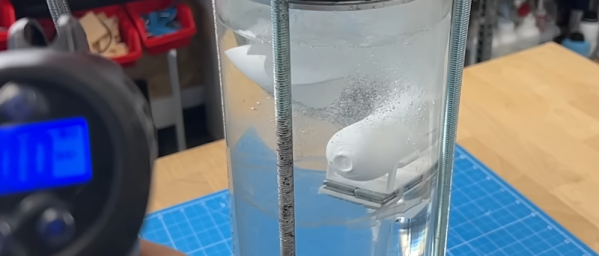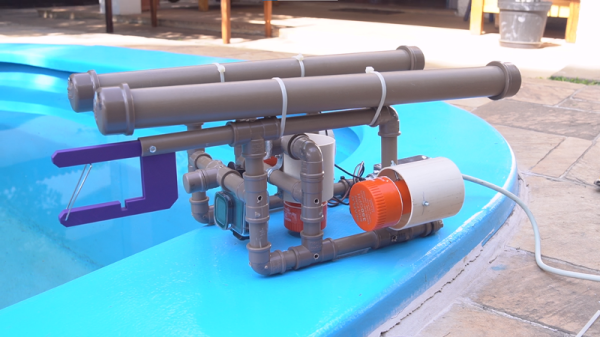A look underneath the water’s surface can be fun and informative! However, making a device to go under the surface poses challenges with communication and water proofing. That’s what this rubber band powered submarine by [PeterSripol] attempts to fix!
The greatest challenge of building such a submersible was the active depth control system. The submarine is slightly negatively buoyant so that once the band power runs out, it returns to the surface. Diving is controlled by pitch fins, which will pitch downward under the torque applied by the rubber bands. Once the rubber band power runs out, elastic returns the fins to their natural pitch up position encouraging surfacing of the submarine. However, this results in uncontrolled dives and risks loss of the submersible.

















